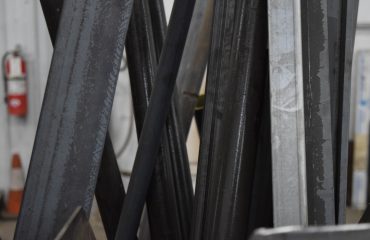The steel industry, known for its complex processes and intricate pricing structures, is undergoing a significant transformation thanks to the integration of Artificial Intelligence (AI). AI-assisted steel quoting tools are emerging as game-changers, offering unprecedented levels of efficiency, accuracy, and speed in the quoting process. This blog post delves into the world of AI-powered steel quoting, exploring its benefits, functionalities, and the future it promises for the industry.
1. Streamlining the Quoting Process: Speed and Efficiency
Traditionally, generating steel quotes involved a laborious manual process. This often included consulting numerous price lists, calculating material costs, factoring in labor, transportation, and overhead, and finally, manually compiling the quote document. This process was time-consuming, prone to errors, and often resulted in delays. AI-assisted tools automate many of these steps. They can instantly access real-time steel price data from various sources, automatically calculate material quantities based on provided specifications (e.g., drawings, bill of materials), and incorporate pre-defined cost parameters for labor, overhead, and transportation. This drastically reduces the time required to generate a quote, enabling businesses to respond to customer inquiries much faster and maintain a competitive edge.
2. Enhanced Accuracy and Reduced Errors: Minimizing Risk
Human error is an inherent risk in any manual process, and steel quoting is no exception. Miscalculations in material quantities, incorrect pricing, or overlooking crucial details can lead to significant financial losses. AI-powered tools minimize these risks by automating calculations and eliminating human intervention in repetitive tasks. Their precision ensures accurate cost estimations, reducing the likelihood of errors and improving the overall reliability of quotes. This accuracy not only builds trust with clients but also protects businesses from potential financial repercussions associated with inaccurate quoting.
3. Data-Driven Insights: Improving Pricing Strategies
Beyond automating the quoting process, AI tools offer valuable data-driven insights. They can analyze historical quoting data to identify trends, predict future price fluctuations, and optimize pricing strategies. By understanding the correlation between different factors (e.g., material type, quantity, market conditions) and the final quote price, businesses can make informed decisions to maximize profitability. This data-driven approach allows for dynamic pricing adjustments, ensuring competitiveness and profitability in a fluctuating market.
4. Integration with Existing Systems: Seamless Workflow
Modern AI-assisted steel quoting tools are designed for seamless integration with existing enterprise resource planning (ERP) systems, customer relationship management (CRM) systems, and other relevant software. This integration streamlines the entire workflow, eliminating the need for manual data entry and ensuring data consistency across different platforms. The ability to access and update information in real-time enhances collaboration and improves overall operational efficiency. This seamless integration makes the adoption of AI-powered tools less disruptive and more readily accepted by businesses already invested in established systems.
5. The Future of AI in Steel Quoting: Advanced Capabilities
The future of AI in steel quoting is bright. We can expect to see even more sophisticated tools that incorporate advanced machine learning algorithms for more accurate price prediction, predictive maintenance for equipment, and even automated negotiation capabilities. AI could also help optimize supply chains by predicting material availability and identifying potential bottlenecks. Furthermore, the integration of augmented reality (AR) and virtual reality (VR) could enhance the visualization and communication of complex steel projects, leading to more accurate and efficient quoting processes. The continuous advancement of AI promises to further revolutionize the steel industry, making it more efficient, profitable, and sustainable.
In conclusion, AI-assisted steel quoting tools are transforming the way businesses operate in the steel industry. By streamlining processes, enhancing accuracy, and providing valuable data-driven insights, these tools are empowering businesses to become more efficient, competitive, and profitable. As AI technology continues to evolve, we can expect even more significant advancements in the years to come, shaping the future of steel quoting and the broader industry.
SEO Tags:
- AI steel quoting
- Steel quoting software
- AI in steel industry
- Automated steel quoting
- Steel price prediction




